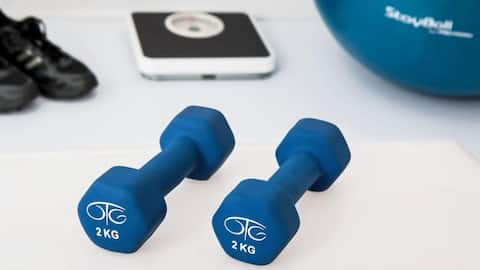Guide to strengthening the weaker side of your body
What's the story
It's a common scenario — one side of your body feels more capable and coordinated than the other. However, when this natural asymmetry turns into an imbalance, problems arise. From chronic pain to increased injury risks, the repercussions can be widespread. But fear not! With awareness and targeted exercises, you can restore equilibrium and welcome strength with open arms.
A problem
Impact of side dominance on physical health
Navigating physically demanding careers or neglecting proper rehabilitation after injuries can exacerbate natural side dominance. Overuse, a common occurrence can lead to severe issues such as torn ligaments and persistent chronic pain, negatively impacting one's long-term well-being and quality of life. Anyone regularly engaged in activities requiring repeated motion or strength, reliant on their dominant side, can experience these issues.
What to do
Addressing imbalances in your daily activities
Heightened awareness is key to restoring balanced movement patterns. Simple changes in daily activities, such as switching the shoulder you carry your bag on or alternating sitting positions, can significantly counteract overuse. Even during seemingly symmetrical activities like walking, paying attention to gait balance is crucial to avoid unintended dominance and promote overall physical harmony.
The answer
Work out to balance out
Unilateral training, which focuses on one side at a time, emerges as the most effective method to promote symmetry in exercise. Dumbbells run high in their demand for equal effort from both sides and prove to be the perfect tools for ensuring proper muscle firing patterns and addressing potential strength discrepancies that may arise from natural sidedness.
Science
Science for corrective exercise
Enter cross-education training, a scientifically backed phenomenon that not only aids in rehabilitation but also serves as a practical pathway for non-injured individuals seeking balance. This method ensures the indirect stimulation of the nonworking side, making the healing process more efficient and effective. Additionally, it promotes balanced strength and stability, contributing to an overall healthier and more resilient body.
Expert advice
See what experts have to say
Fitness analyst Yash Bhartiya shared with Newsbytes, "To strengthen a body part, the only way is to strengthen the muscles around that body part." By incorporating mobility drills, resistance training, and an awareness of daily habits, you can embrace both sides safely and proactively. So, say goodbye to pain and injuries, and welcome a harmonious balance in your life!
